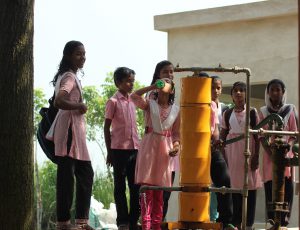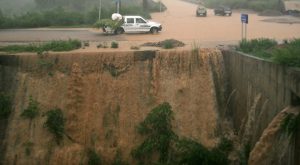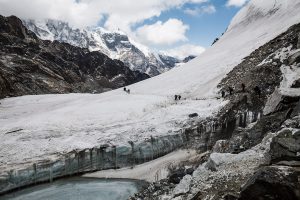Incensed by a ‘shoddy’ Environmental Impact Assessment (EIA) report, a group of environmentalists, academics and activists have asked the Jammu & Kashmir State Pollution Control Board (JKSPCB) to cancel the public hearings on the 1,856 MW Swalkote hydropower project. The hearings are part of the environmental clearance process for the project, which is located on the transboundary Chenab River in the Indian state of Jammu & Kashmir (J&K). In their open letter to JKSPCB, the group has pointed out a number of lacunae in the EIA.
“We urge you to cancel the public hearings till these concerns are addressed in a satisfactory way,” said the letter, reflecting the concerns of a group of 16 leading civil society members from across India. The signatories included senior academics, as well as Right to Information activists and a senior diplomat who has served as an Indian ambassador.
The signatories are Shakil Ahmad Romshoo, Head, Department of Earth Sciences; M. Sultan Bhat, Head, Department of Geography & Regional Development; Arshid Jehangir, Assistant Professor, Department of Environmental Science; and Irfan Rashid, Assistant Professor, Department of Earth Sciences, all from the University of Kashmir; E.A.S. Sarma, Former Secretary, Government of India; Madhu Bhaduri, former Ambassador of India; Bharat Jhunjhunwala, formerly from IIM Bangalore; Samir Mehta, International Rivers & River Basin Friends; Tarun Nair, Researchers for Wildlife Conservation; Manoj Misra, Yamuna Jiye Abhiyaan; Himanshu Thakkar and Parineeta Dandekar, South Asia Network on Dams, Rivers and People; Latha Anantha, River Research Centre; Zareen Bharucha, University of Essex; Vimal Bhai, Matu Jan Sangathan; and Raja Muzaffar Bhat, Right to Information activist.
The public meetings, notified by JKSPCB on its website, are slated to be held on January 18, 21 and 28 in Udhampur, Reasi and Ramban districts of J&K, where the project is going to be constructed. Meetings in three other villages have already taken place in October and November 2015, so these are the final set of hearings over the EIA.
Swalkote hydroelectric project catchment boundary, as shown by the project developers
Officials are unimpressed. Speaking to thethirdpole.net from his Jammu office, SPCB chairman Abdul Razzaq said he was “just a referee” and not authorised to take a call on this matter. He emphasised that he could not call off the public meetings “merely on the basis of the letter”.
“Everybody has a right to express his opinion and I have no problem with that. But I cannot cancel the meetings as it is not my job. My job is to hold the meetings, do their video recording and present the entire proceedings to the Ministry of Environment, Forests and Climate Change (MoEF&CC),” Razzaq told thethirdpole.net.
“Those who have prepared the report will also be present during the public meetings. So, if anybody has any objection, he can convey it to them.”
Razzaq refused to comment on the concern of the environmentalists that the text of the project report is “incomplete and inadequate” and is too ambiguous for the people to understand because of flawed translation and lack of explanation of jargons.
Incomplete documentation, mistakes in translation
According to the environmentalists the SPCB website contains only the executive summary of the EIA-EMP of the project in English, Hindi and Urdu. It does not contain the full EIA-EMP as is the norm. The report does not contain the certificates from the EIA consultants, there is no index page, and the cover page is at the end. The one certification present expired after August 2013 – more than two years ago. More problematically, “the table and maps are not translated, most key words are not translated, including common words like dam, monsoon and reservoir and even the translation done is flawed and there are so many mistakes in just first two pages, it is clear there has been no proof reading of the text.”
One sentence in the first page of the executive summary reads, “Scoping clearance of Sawalkote (sic) HEP of 1200 MW project was accorded by Ministry of Environment Forests and Climate Change (MoEF&CC), Government of India vide letter no. J-12011/19/2011-IA.I dated October 13, 2011… Subsequently, scoping clearance was revalidated by MoEF&CC for Installation capacity of 1856 MW.” In their letter the environmentalists note that this gives an impression that the project has already been given clearance by MoEF&CC, when it is only scoping clearance. The term “scoping clearance” has not been translated.
Such mistakes render the executive summary legally flawed. And the environmentalists assert that it will not stand legal scrutiny.
Changes in area submerged, people affected
The MOEF&CC scoping study had anticipated that 900 hectares — of which 600 hectares are forest land — would be submerged due to the project. But according to the letter, “The EIA executive summary now on JKSPCB website says (para 1.4.1.7) that the project submergence area is 1158.75 hectares (ha) (add the figures of three districts given in the table) including 684.15 ha of forest land.” The letter says, “This huge 28.75% increase in submergence area makes the scoping clearance for the project already invalid and project will need to apply afresh for the scoping clearance as per point 10 of the clearance letter.”
There are many other changes. “Total land requirement has gone up from 1,099 hectares given in scoping clearance to 1401.35 hectares, and the number of project affected families has more than doubled from 629 given in scoping clearance to 1477 now mentioned in EIA summary.”
This, the environmentalists have observed, makes the current scoping clearance invalid according to the clearance letter. Hence holding public hearing for a project that does not have valid scoping clearance is clearly legally invalid.
Run of the river dam, or an artful lie?
One of the major concerns expressed by the environmentalists is regarding the run-of-the-river status of the Swalkote project. “The EIA executive summary claims that Swalkote is a run of the river scheme, but this claim is totally wrong and misleading considering that in involves 192.5 m high dam, 1159 ha reservoir with 530 million cubic metres of storage capacity and a massive power house close to the toe of the dam,” the letter says.
“How can such a project be called run of the river project? This is clearly wrong and misleading claim.” A run of the river hydroelectric project is not supposed to have a reservoir.
Another concern is regarding lack of cumulative assessment of the Chenab River, which may see multiple hydropower projects as it runs through Jammu and Kashmir. The letter says no cumulative impact assessment of these projects. “This is not only imprudent, but it is also in violation of the MoEF orders of May 28, 2012, where MoEF had cleared required such study before more projects can be considered in any basin.”
The environmentalists also expressed surprise that there was no mention in the report as to how climate change will have an impact on the project and how the water flow, silt flow and disaster situations of the upstream and downstream projects will affect the river, the people living there and the area. The letter says that the terms of reference for the report have not been fulfilled with social impact assessment, rehabilitation and resettlement, details of land-use, valuation of ecosystem and biodiversity services, GPS readings of Rare, Endangered and Threatened (RET) species not finding a mention in the report.
Given these large gaps, it is surprising that the earlier hearings went through so quickly. It remains to be seen if somebody other than the SPCB chairman will respond to the allegations.
![<p>The Baglihar dam, also on the Chenab, in J&K [image by: ICIMOD]</p>](https://dialogue.earth/content/uploads/2016/01/Baglihar-ICIMOD.jpg)


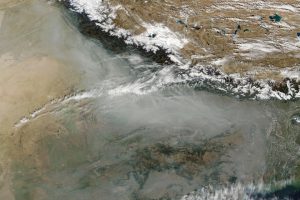
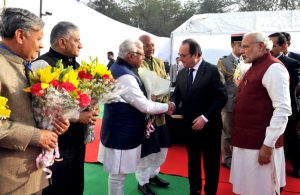
![Many varieties of dhekia xaak (fiddlehead fern), which are extensively used in Assamese cuisine are disappearing with the changing climate. [image by Wikimedia/Tammy]](https://dialogue.earth/content/uploads/2016/01/fiddlehead-ferns-300x187.jpg)
